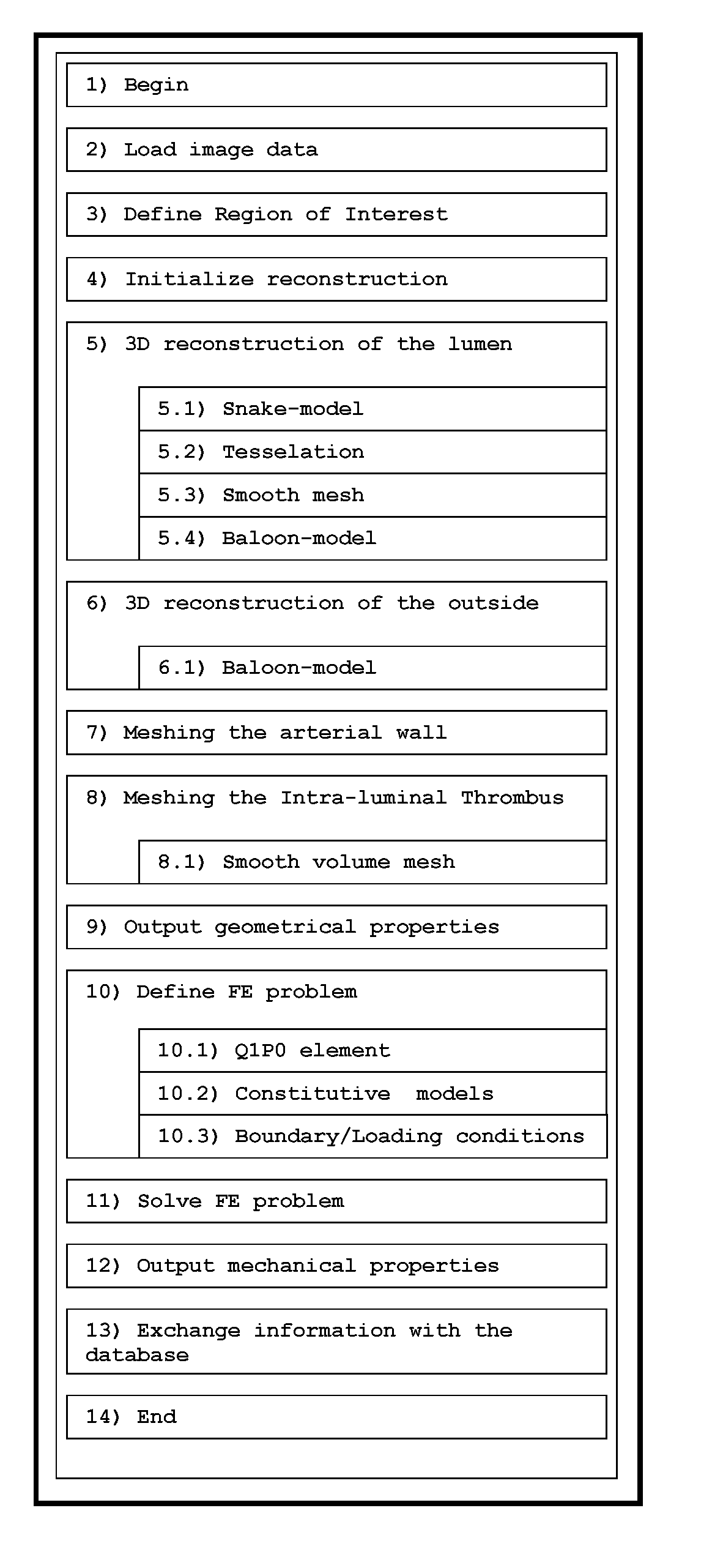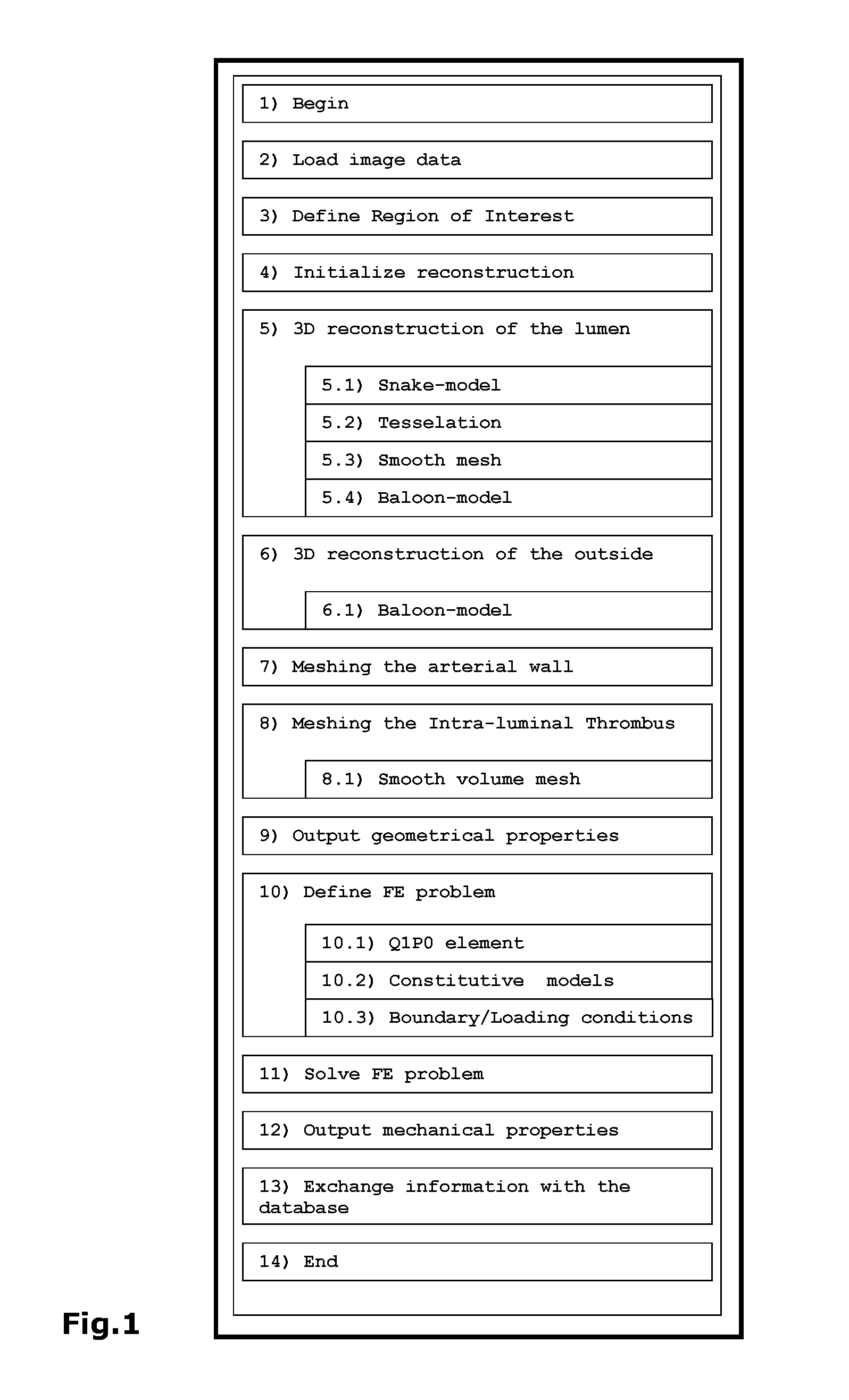Automatic geometrical and mechanical analyzing method and system for tubular structures
a geometrical and mechanical analysis and tubular structure technology, applied in the direction of image analysis, instruments, details involving processing steps, etc., can solve the problems inability to automatically and comprehensively solve the problem of inability to analyze vascular bifurcations, and model applicability that is very limited, so as to improve the quality of the fe mesh
- Summary
- Abstract
- Description
- Claims
- Application Information
AI Technical Summary
Benefits of technology
Problems solved by technology
Method used
Image
Examples
Embodiment Construction
[0060]Specific embodiments of the invention will now be described with reference to the accompanying drawings. This invention may, however, be embodied in many different forms and should not be construed as limited to the embodiments set forth herein; rather, these embodiments are provided so that this disclosure will be thorough and complete, and will fully convey the scope of the invention to those skilled in the art. The terminology used in the detailed description of the embodiments illustrated in the accompanying drawings is not intended to be limiting of the invention. In the drawings, like numbers refer to like elements.
[0061]The following description focuses on embodiments applicable to analyze vascular lesions and in particular to AAAs or carotid stenoses. However, it will be appreciated that the invention is not limited to this specific application but may in some embodiments be applied to many other tube-like internal organs including for example other blood vessels, the ...
PUM
 Login to View More
Login to View More Abstract
Description
Claims
Application Information
 Login to View More
Login to View More - R&D
- Intellectual Property
- Life Sciences
- Materials
- Tech Scout
- Unparalleled Data Quality
- Higher Quality Content
- 60% Fewer Hallucinations
Browse by: Latest US Patents, China's latest patents, Technical Efficacy Thesaurus, Application Domain, Technology Topic, Popular Technical Reports.
© 2025 PatSnap. All rights reserved.Legal|Privacy policy|Modern Slavery Act Transparency Statement|Sitemap|About US| Contact US: help@patsnap.com



